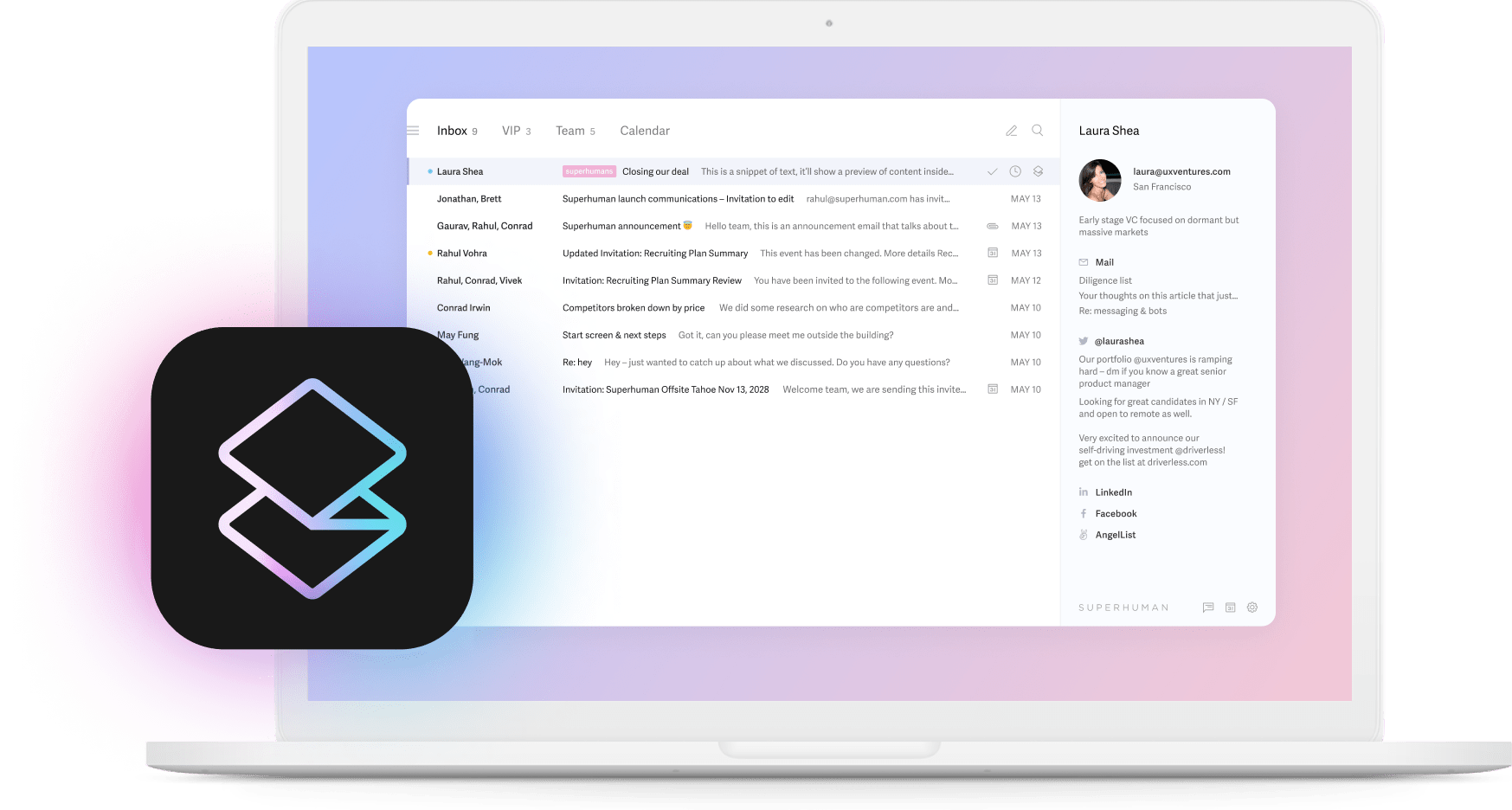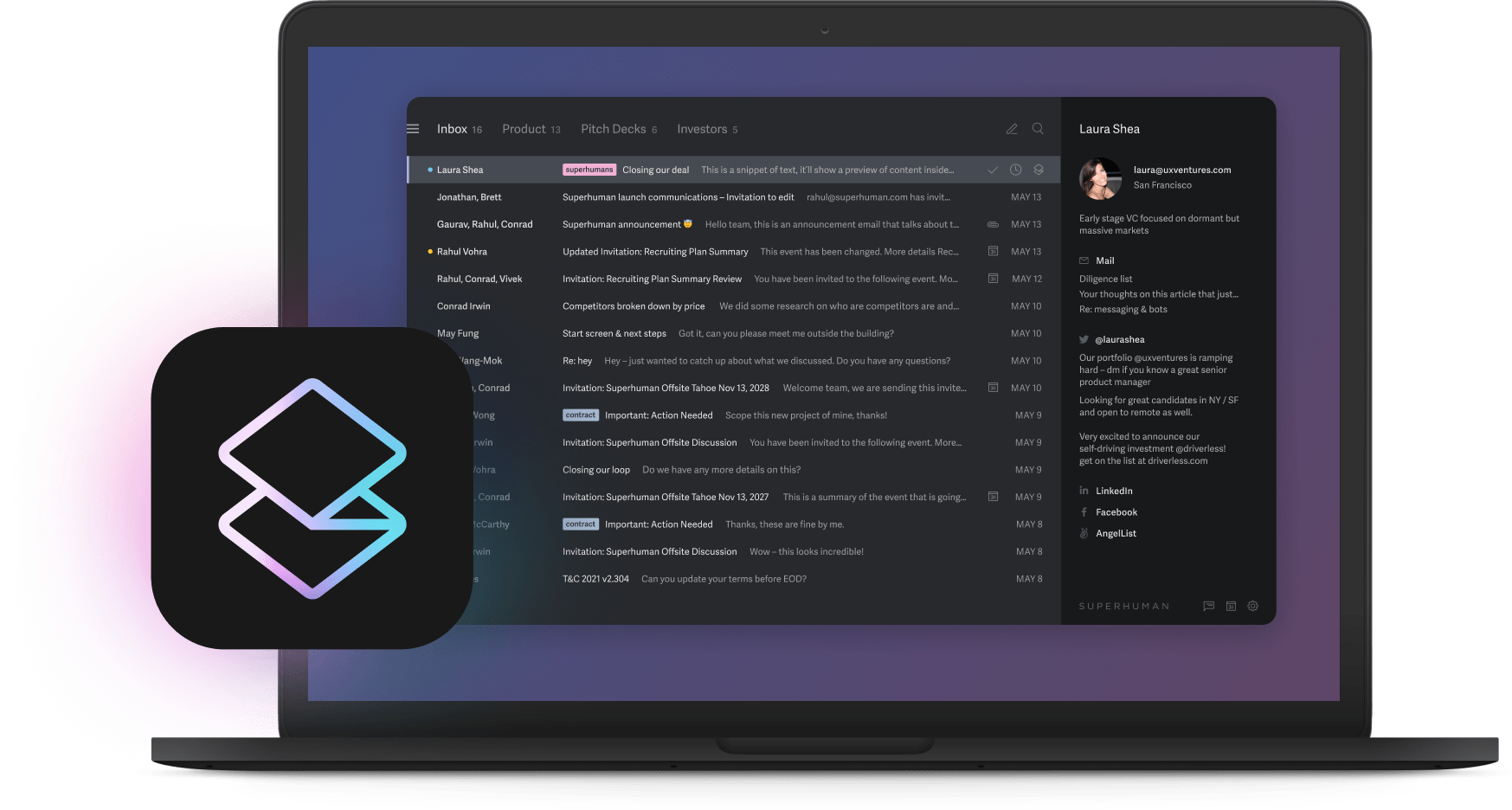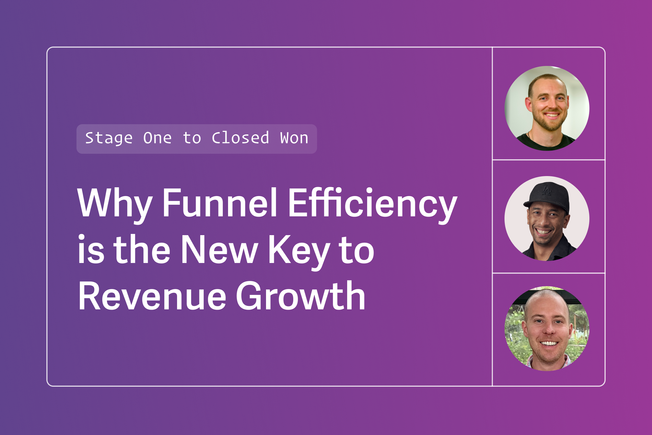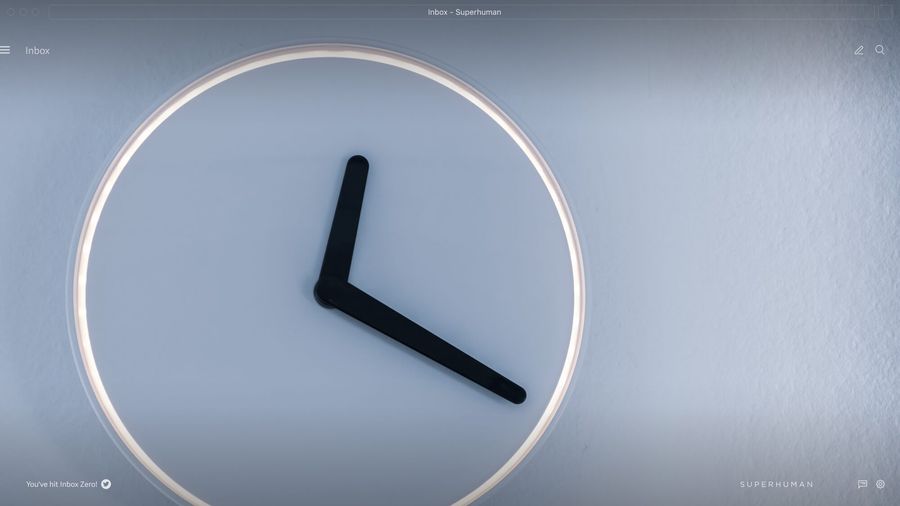
When you're pitching a product or service by email, the time you hit send can literally make or break the sale.
A sales email that arrives in the middle of the night? Likely to go straight to the trash. One that comes at 4 PM on a Friday? It'll probably be cleared out on Monday with the weekend's junk mail. A sales email that hits the recipient's inbox first thing Monday morning? It might get lost in the shuffle as they're easing into their week.
While the content of a sales email is the most important part to get right, knowing the best time to send sales emails can also help boost your open rates, click-through rates, and conversions. Unfortunately for marketers and sales teams, there just isn't one ideal time to hit send on an email pitch — it's a little more complex and nuanced than that. Read on for all you need to know about when to send sales emails to optimize your campaigns for success.
What is the best day to send sales emails?
Many different organizations have conducted studies that compared open and click rates for emails sent on different days of the week. While their findings vary a little bit, the data shows that in general, the best days for sending email are:
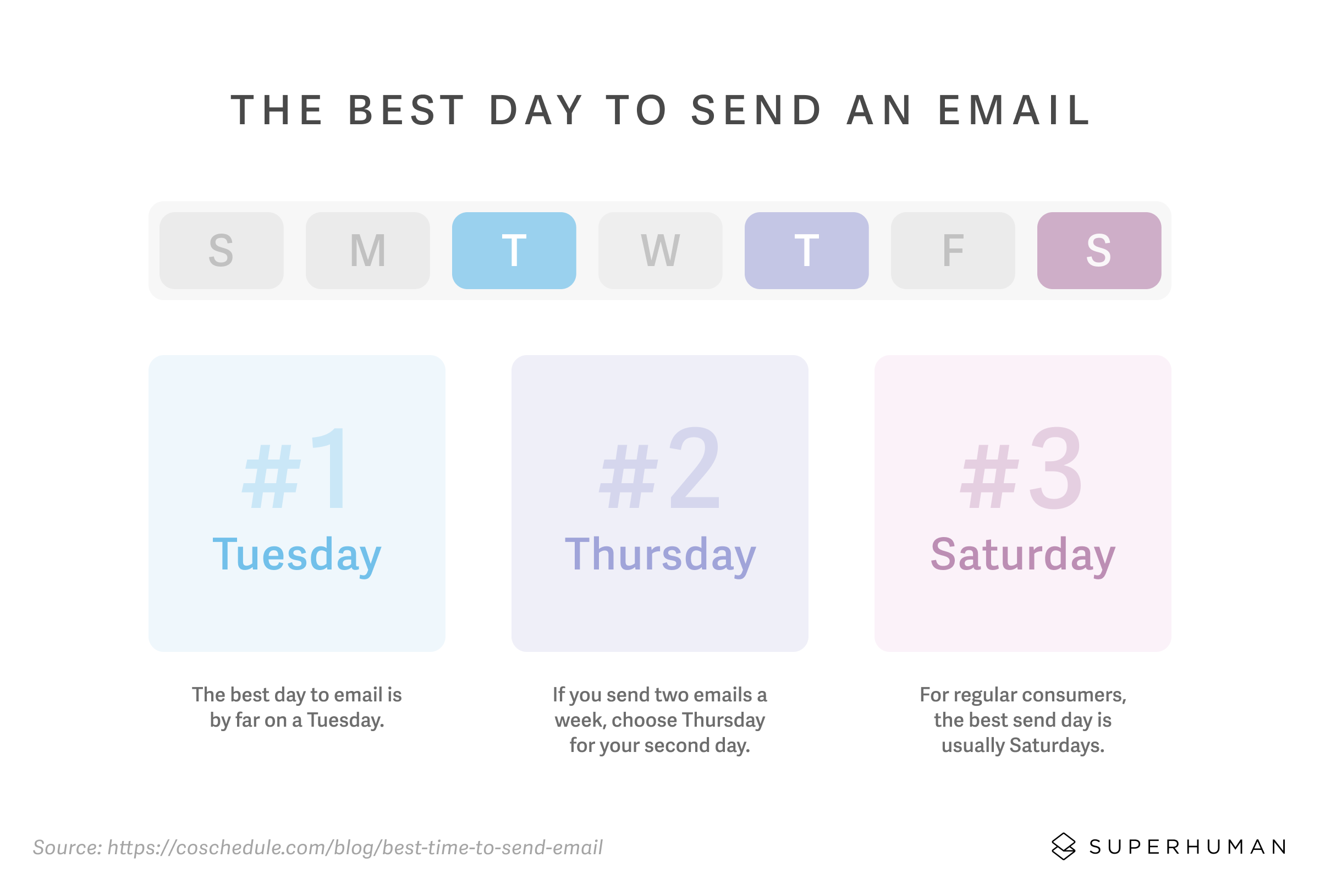
- Tuesday
- Thursday
- Saturday
But let's take a closer look at all the data that backs this up.
GetResponse conducted a huge, global study of inbox activity in 2020, and found that the best day for email open rates was Friday, while the best day for click-through rates was in the middle of the week: Tuesday, closely followed by Thursday.
Customer.io had similar findings. In addition to being the most popular day for businesses to send emails, Tuesday had the highest open rates of the week. Customer.io also found that weekends had high open rates, but a much lower overall volume of email, which meant Tuesday was still the winner for most emails opened, combined with a high overall open rate.
Propeller conducted a study using data from Experian and found that the best days to send email varies by audience, but for regular consumers, it's usually Saturdays, closely followed by Tuesdays.
The bottom line: The highest number of studies found the best open and click rates for emails sent midweek — with Tuesday being the overall best day for both opens and clicks. Thursdays were close behind. But if you have an audience that checks its email on the weekends, Saturday may be the right choice for you.
What is the best time to send sales emails?
Things get even more complicated when you try to determine the best time of the day to send sales emails. Once again, numerous studies have been conducted and found some pretty varied — and fascinating — results. But for the most part, these times of day are when it seems most likely that your email will be opened and/or clicked:
- 4 to 6 AM
- 4 to 6 PM
- Noon to 6 PM
Let's take another look at the data from the inbox activity study GetResponse conducted in 2020. It shows that, globally and across time zones, email sent at 4 AM gets the highest open rates, while email sent at 6 AM gets the best click-through rates.
Propeller CRM aggregated data from Experian, Hubspot, and other sources, and found that the best time to send an email blast depends on the action you want the recipient to take — the highest open rates happen when emails arrive first thing in the morning, the most clicks happen when emails arrive overnight, and the most responses come from emails sent first thing in the morning or after work hours.
But a separate study by Campaign Monitor showed that most emails (over half of them, in fact) are opened during what would be considered "regular" working hours — on weekdays between 9 AM and 5 PM, with a slight dip during lunch time. They found that one of the best times to send email (if your goal is to get it opened) is in the late afternoon, after most people take their lunch breaks.
But Campaign Monitor's research also added a new factor to consider: the device your audience uses. They found that emails opened during the traditional workday were most often opened on desktop computers. In the early morning and the evening, outside of those traditional work hours, more emails were opened on mobile devices. That means that, when choosing the perfect time to send sales emails, you have to consider whether your audience uses mostly desktop computers or mobile devices.
The bottom line: Choosing the best email time is even more complicated than choosing the best day. Whether your audience works on weekdays or weekends, whether they mostly use desktop computers or mobile devices, whether your email list spans different time zones — these are all factors to consider when choosing the optimal time to reach your email subscribers.
Why this research might not actually help you
All of this research comes with some big caveats.
The fact is that there's no magic day or time that guarantees people will open your emails, click through, and convert. There are many other factors to consider outside of the day and time you hit send.
The best time to send sales emails varies by audience. It varies by industry. It can even vary by time of year. Plus, there are all the other factors that influence whether a reader will open and click through your email: the subject line, the quality of the lead, whether it's a warm lead or a cold lead, how many emails they receive in a day — the list goes on.
John Foreman, Vice President of Product Management and former Chief Data Scientist at MailChimp, told CNBC Make It, "There isn’t one right answer. The best time to send an email depends on a few things: it depends on what business you’re in and it depends on who you are contacting."
Foreman would know — Mailchimp is one of the most trusted and recognizable email campaign tools out there. He continued to say that it's up to marketers to get to know their demographics as deeply as possible to learn what makes them most likely to open emails — from the subject line to the message content to, yes, the day and time it arrives in their inbox.
"Who they are, what job they work, what age they are, if they are a student, if they are in the workforce, what types of devices they use, where in the world they live", Foreman said. "All of those things dramatically affect the best time".
Here's an example: if you're a B2B software company that sells enterprise solutions, your audience is likely to check email during the traditional, Monday-Friday, 9-5 workweek. You might aim for the beginning of the day, when they're just arriving to work, or early afternoon to catch them right after lunch.
However, if your target audience is women ages 30-45, it's probably safe to assume that they'll be browsing through email on a mobile device in the evening, after work hours. If your email lands during that time, it's more likely to grab your audience's attention!
For these two types of audiences, you approach to email sales should be drastically different — including the day and time you aim to send your messages.
The research we've cited in this article can provide a starting point, but day and time are not the only (or even the most important) factors to determine an email campaign's success. In order to optimize your sales and promotional emails, you should gather data about your target audience, analyze when and how your competitors send email, and A/B test different campaigns to help you hone in on the ideal send time.
How to know if your sales emails are working
A/B testing is one of the best ways to discover the best sales email practices for your product, industry, and target audience. To conduct an A/B test, you'll send two versions of a sales email that are almost identical, but with one factor that's slightly different between them. For example, if you're trying to find the best time to send email marketing campaigns, you might send to half your email list at 3 PM, and the other half at 6 a.m. Then, pay attention to the benchmarks and KPIs that help you determine how your message is performing.
Some metrics to watch include:
- Open rate. This is the number of recipients who opened your email, rather than sending it to trash or junk without reading it. Higher open rates can be a good indication that your email is arriving at a time when your target audience often checks and reads messages.
- Click-through rate. This is the number of recipients who click something in your email — a link, a product, a promo code, etc. — and end up on your website. The CTR can be a more helpful indicator of a campaign's effectiveness than just the open rate, since it measures email engagement.
- Click-to-open rate. This combines the open and click-through rates, showing the number of recipients who clicked through your emails as a percentage of those who opened the message. This can help you measure how well your messaging is resonating with your audience.
- Conversions. This is the number of sales that result from your email campaigns. Certain softwares can help you track conversions that are attributed to specific email messages or campaigns.
- Unsubscribe rate. This is the number of recipients who unsubscribe from your email list upon receiving a message. If your unsubscribe rate is high, it could indicate that your content isn't relevant to your target audience.
A/B testing can help you determine effective days and times to send sales emails to your audience, but keep in mind that it can also help you discover much more than that. You can A/B test all kinds of factors, like..
- Email subject lines
- Number of emails you send
- Message length
- Templates vs. personalized messages
- Cold email success
- Follow up emails
Hit the best time to send sales emails (every time) with Superhuman
Having the right tools is the only way to nail your email marketing strategy — including getting your send times exactly right, every time.
Superhuman has many features designed to help you send messages at the exact right moment. Take read statuses, for example, which allow you to see when your sales emails have been opened, allowing you to follow up or respond with perfect timing to close more deals.
You can also manage your follow ups to ensure an important email never falls through the cracks — just choose a time (for example, two days), and if you haven't heard back, Superhuman reminds you to follow up. Alternatively you can schedule an automated follow up, which gets sent on the date you choose if there's no reply.
And once your A/B testing has determined the perfect time to send sales emails to your audience, you can make sure you always appear in their inbox at just the right moment. Even if you're OOO or not at work, you can schedule messages with Superhuman. If you want a sales email to arrive at 8:40 AM, that's precisely when it will be delivered.
Finding the best time to send sales emails is only one part of the challenge. But investing in the right tools to take some of the guesswork and room for error out of the sales cycle can be the difference between letting a deal fall through the cracks, or closing your next big sale.
Get started with Superhuman
